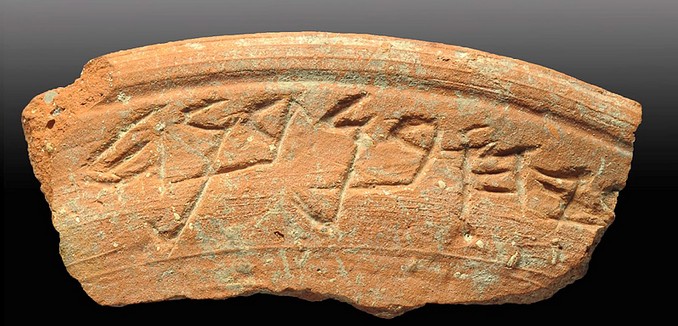More people were able to read and write Hebrew during the First Temple period (around 600 BCE) in what is now Israel than was previously believed, a new study has surmised.
An analysis published this week in the Proceedings of the National Academy of Sciences used a combination of archaeology, Jewish history, and computer processing to show that at least six different people had written messages found on pottery shards in the remains of a fortress near the Dead Sea, which may prove that soldiers and others who were not religious leaders or dignitaries also had Hebrew literacy skills.
The messages consist of commands or requests to deliver supplies to the troops of the ancient kingdom of Judah. The modern-day scientists used a complex mathematical algorithm to distinguish between the different authors of the notes. The analysis showed that even soldiers of lower rank had a command of the Hebrew language.
Roughly 100 messages were analyzed as part of the study. The messages came from about the same time that the Babylonian king Nebuchadnezzar destroyed the First Temple, the city of Jerusalem, and the kingdom of Judah. The fort in which the messages were found was about a half-acre in size and likely housed at most 30 soldiers.
“There is something psychological beyond the statistics,” Prof. Israel Finkelstein of Tel Aviv University, one of the leaders of the project, told The New York Times. “There is an understanding of the power of literacy. And they wrote well, with hardly any mistakes.”
The study attempted to address whether it was possible for the Bible to have been written prior to the destruction of the First Temple. If the literacy rates at the fort held for the whole population the Judean kingdom, which numbered about 100,000 people, it would be conceivable, according to the study, for the Bible to have been transcribed in its current form earlier than previously believed.
The Times’ coverage of the archaeological proof of Israel’s Jewish heritage has not been without controversy. The newspaper published a story last October suggesting that the existence of the Jewish Temples was questionable, prompting several responses from archaeologists and historians asserting that the Temple’s existence was beyond doubt.
The discovery in 2013 of artifacts showing a Jewish connection to Jerusalem going back 2,500 years prompted Prime Minister Benjamin Netanyahu to call the finds “historic testimony, of the highest order, to the Jewish People’s link to Jerusalem, to its land and to its heritage.”
[Photo: Clara Amit / Israel Antiquities Authority / Flash90 ]




